Buildings in Padang (1)
On September 30, 2009, a magnitude 7.5 earthquake occurred off the coast of Sumatra, Indonesia. This region is an earthquake-prone area, with earthquakes of magnitude 8 or greater having occurred in 2004, 2005, 2007, and 2012 in the vicinity.
The epicenter of the 2009 earthquake was on the ocean floor 60 km west-northwest of Padang and 80 km deep. 1,115 people were killed, 1,214 seriously injured, and 1,688 slightly injured, mainly in West Sumatra Province. The number of houses damaged was 13,500 severely, 65,000 moderately, and 79,000 slightly. (Total as of October 14, 2009).
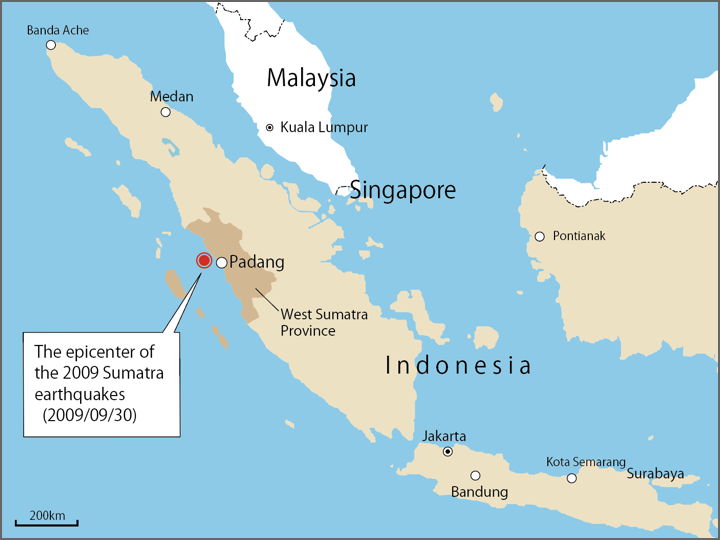
Padang, Indonesia has been a trading center since the 16th century and was occupied by the Dutch for most of the period from 1633 to 1942. (It was occupied by the British from 1781-1784 and from 1795-1819.)
The Dutch developed the city along the Arau River, so the old town is still lined with buildings in the Dutch architectural style.
However, the buildings in Padang are not only of the Dutch style, but also of Chinese and traditional architectural styles. The Dutch style has also changed in style in response to the local climate.
Before the earthquake, there were more than 70 historical buildings in Padang, many of which were damaged. Some of them were demolished or used as materials due to the danger after the earthquake, so many of the buildings were left as ruins.
The Jakarta Post (2011/01/18) said that 'Heritage buildings in poor state in Padang Scores of historical buildings of the Dutch colonial era that were damaged in the 2009 earthquake in Padang, West Sumatra, remain in poor condition due to a lack of funds needed to renovate them.’
Recently, while reading some articles about buildings in Indonesia, I saw some news about the completion of building renovations.
Take this building, for example: the former Padangsche Spaarbank, built in 1908.
The image is a street view taken in July 2015.
It was used as a hotel since 1994, but since the earthquake in 2009, it had been abandoned and is in ruins.
The building remained in this condition until 2018, but road construction in front of the building began in 2019. The building was then restored and in January 2024 it was in the condition shown below. Now they are using it as a cafe.
I will show another building.
It’s called the Geo Wherry & Company Building, and this is a street view from 2015.
Then this is how it was renovated in 2024.
It appears to have started operating as a restaurant.
It is nice to see old buildings like these being taken care of and put to good use.
…So I decided to make a pop-up card using the buildings in Padang as models.
I have not yet researched Padang’s historical buildings in detail, so there are probably other buildings to choose from, but tentatively, I filled in the map with buildings of interest to me as models for the pop-up cards.
I have selected a few from the mosques and a few Dutch style buildings.
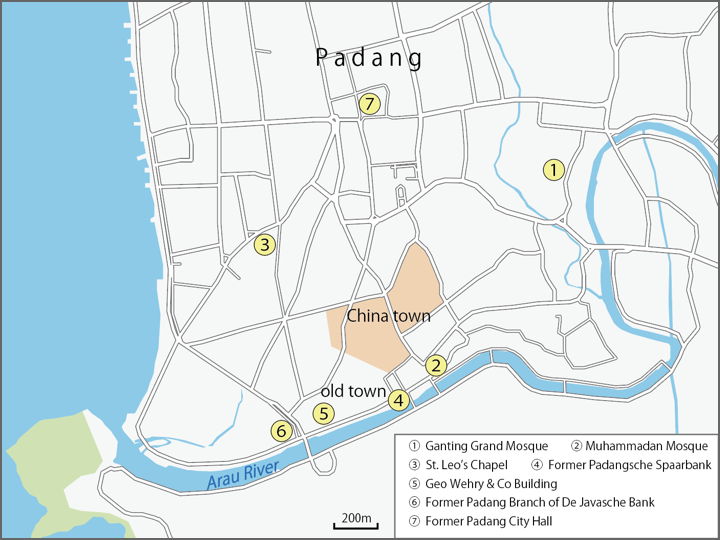
The numbers are in chronological order of construction. The mosques in (1) and (2) were built in the first half of the 19th century, and the buildings in (3) through (7) were built in the first half of the 20th century. The buildings shown in the street view above are located at (4) and (5) on the map.
And I made pop-up cards of the two buildings identified in the street view.
The first.
The former Padangsche Spaarbank.
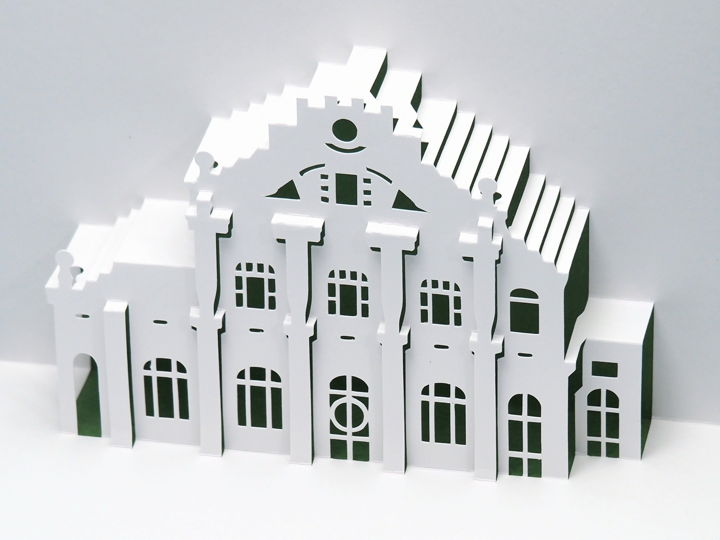
In the actual building, there is not such a big difference between the columns and the wall, but it is exaggerated so that the card can be folded.
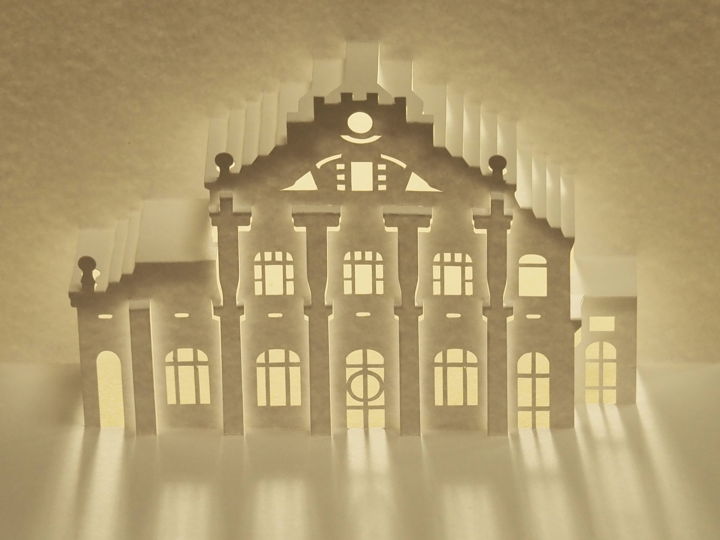
After Indonesia’s independence, the bank was used as “West Sumatra Savings Bank", so the plaque next to the entrance reads “Bank Tabungan Sumatera Barat dahul u Padangsche Spaarbank (West Sumatra Savings Bank, formerly Padangsche Spaarbank)".
The second card is Geo Wehry & Co. Building.

Geo Wehry & Co. appears to have been a Dutch firm. This building was probably built in 1926. In the pre-WWII photo, a railroad can be seen running along the street in front of the building.
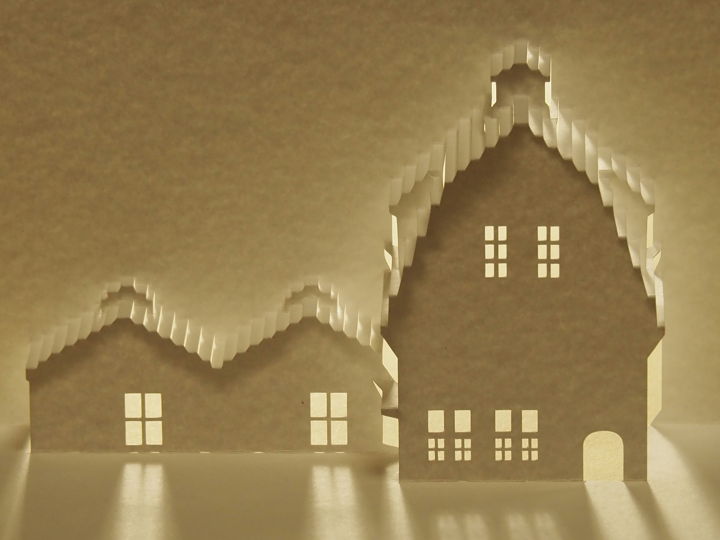
Recent aerial photographs show two warehouse-like wings lined up on the north side of the building. I made a card with them thinking they might be connected to the building in the foreground, but I am not sure if that is really the case.
I am working on pop-up cards of other buildings in Padang, and will update the main site when they are ready.
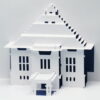
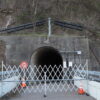
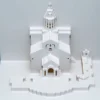
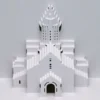
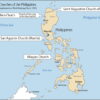
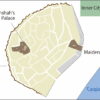
Discussion
New Comments
Please note that comments containing unrelated links will not be displayed.